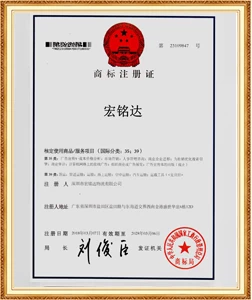Peace in the Red Sea? Freight rate collapses? ! Analytical agency: The freight rate in the collective transportation market will fall by 60% within half a year!
Sunny Worldwide Logistics is a logistics company with more than 20 years of transportation experience, focusing on markets such as Europe, America, Canada, Australia, Southeast Asia, etc., and is more than the owner of the cargo owner.

Sea-Intelligence, a well-known maritime consulting firm, wrote that if container shipping companies can safely cross the Red Sea and the Suez Canal again, this could trigger a "price war."
In the past year, route safety issues in the shipping industry have become a major concern for global logistics, especially the navigational safety around the Red Sea and the Suez Canal. The attacks on merchant ships by Iran-backed Houthi militants have led many shipping companies to choose to detour southern Africa to avoid passing through the important global shipping routes of the Red Sea and the Suez Canal. Once the situation in the Red Sea stabilizes and shipping companies restart this route, they may usher in a "price competition" and freight rates will show a rapid decline.
According to forecasts by sea-Intelligence, if the Red Sea route reopens, freight rates for container shipping are likely to drop by 60% to 70% within six months. This change will profoundly affect the supply and demand pattern of the global shipping market and may bring about similar or more severe market conditions as at the end of 2023.
Red Sea route reconnection may cause a plummeting freight rate
The core source of profit for shipping companies is undoubtedly freight rates, and freight fluctuations directly determine whether shipping companies can maintain profitability. In 2023, many shipping companies fell into a loss due to a global economic slowdown and a sharp decline in shipping demand. This situation has made the "price game" in the global shipping industry more intense.
In the past year, the blockade of the Red Sea route has forced many shipping companies to choose to detour the southern end of Africa, adding a lot of voyages and costs. According to Sea-Intelligence's analysis, if the situation in the Red Sea stabilizes, shipping companies will be able to re-activate this more direct and fuel-saving route, which will have a significant impact on market prices.
Analysts believe that once the shipping company resumes the use of the Red Sea route, freight rates may drop sharply. Due to the oversupply of market demand, the container shipping market will fall into a "price competition". In order to compete for market share, shipping companies may be willing to cut prices to attract customers. Freight rates are expected to fall 60% to 70% within 6 months. This change will not only change the profit model of shipping companies, but may also bring the market back to a supply and demand imbalance by the end of 2023.
How do shipping companies deal with the "price decline"?
Although analytical agencies predict the trend of plummeting freight rates, liner companies obviously do not want to see a "price crash" in the market. In the view of liner companies, freight rates at the end of 2023 are already too low, even below their breakeven point, resulting in losses for multiple shipping giants in the fourth quarter. In this regard, liner companies may try to convey a message to the market: freight rates will not fall so dramatically, because freight rates at the end of 2023 are themselves unreasonable, and excessively low freight rates cannot guarantee basic profits.
However, Sea-Intelligence noted that liner companies are reluctant to face price plunges, market competition pressures may force them to compromise. In order to maintain market share, shipping companies will have to accept the reality of price cuts. This "price collapse" is not just a natural reaction to the market, but also a fierce game between shipping companies for customers.
"In order to maintain market share, shipping companies will accept the decline in freight rates at all costs." Sea-Intelligence analyzed that shipping companies will face a dilemma: on the one hand, customers expect freight rates to return to pre-epidemic levels; on the other hand, shipping, Companies must also find room for survival in extremely competitive markets.
The impact of Red Sea stability on global shipping pattern
From a more macro perspective, the safety and openness of the Red Sea route directly affect the global shipping pattern. The Red Sea is not only an important channel connecting Asia and Europe, but also one of the busiest shipping regions in the world.
However, as the situation in the Red Sea gradually stabilizes, shipping companies will reconsider the commercial value of this channel. According to Sea-Intelligence's forecast, after the Red Sea resumes navigation, although market demand may be released due to long-term ship backlog in the short term, in the long run, this will lead to an imbalance in supply and demand and huge downward pressure on freight rates. The previous backlog of shipping demand due to the Red Sea Channel blockade will explode in a concentrated manner in the short term, and this process will be seen by shipping companies as the last opportunity to compete for market share.




















